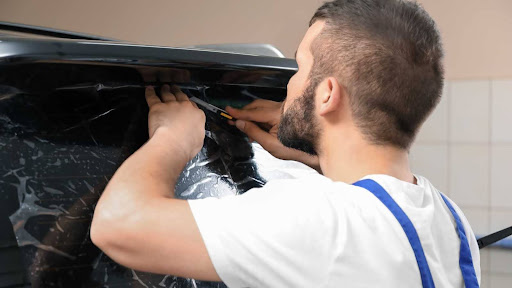The Role of Heat-Resistant Threads in Workwear and Protective Clothing
Day in and day out, workers worldwide are threatened with extreme heat and flames in a wide range of occupations. The constant threat of severe burns and injuries comes from welders who work with molten metal and from firefighters battling an inferno. Such hazardous environments cannot be valued enough if it means lacking reliable workwear and protective clothing. Heat-resistant threads are the unsung heroes of safety and are making critical holds on those protective layers, and maintaining their functionality when heat stress gives them a beating. The role of heat-resistant threads in workwear and protective clothing in detail is what this article is getting into.
The Imperative of Heat Resistance: A Matter of Safety and Survival
Manifold perils are involved with high temperatures in the workplace. Severe burns, heatstroke, and fatalities can occur after exposure to direct flames, radiant heat, molten metal splashes, and hot surfaces. These risks come as a natural part of firefighting, welding, petrochemicals, metallurgy, and other industries that require workers to wear protective clothing; hence, they need to have appropriate protective clothing.
Standard threads, which are mostly made out of cotton, nylon, or polyester, are not created to resist such extreme thermal circumstances. These threads cause the seams of protective garments to fail when melted, weakened, or ignited by high heat. The failure of this garment can jeopardize the wearer’s entire garment, which can expose the wearer to the very dangers that the garment was meant to protect him from. As a result, there is no minor issue with the appropriate selection of heat-resistant threads; it is an essential requirement for implementing safety measures to protect the lives and health of workers in high-risk occupations.
The Protective Powerhouse: Properties and Advantages
The advantages and properties of heat-resistant threads used in workwear and protective clothing result in their effectiveness.
- Fire protection (FR): An important property for garments that will protect against fire. FR threads will not ignite nor self-ignite if exposed to a flame source, and the flame, if present, will stop the FR threads from igniting and, therefore, will not also make the garment burn.
- Thermal Stability: These threads continue to be strong, flexible, and structurally stable at high heat. They shrink, melt, degrade, and one thing they resist very much: compromising the protective barrier.
- Low Thermal Conductivity: Heat-resistant external posts cool the threads of the external environment very well and do not transfer the heat to the skin of the wearer. This property is important and is crucial in controlling the risk of heat stress and burns, particularly in extended exposure to high temperatures.
- Heat Resistant Threads: Threads with a higher melting or decomposition temperature than standard will show. This is what is needed for the garment to be able to withstand the hot temperature without falling apart or losing its capability to warp the garment.
- Good Chemical Resistance: Heat-resistant threads also usually have good chemical resistance, especially to common industrial-type chemicals. Keeping in mind that the protective clothing may be exposed to hazardous substances, this is important for maintaining the integrity of the protective clothing.
- Physical Abrasion: Workwear and protective clothing are regularly exposed to often rough conditions. Heat-resistant threads are usually used in making the garment with a view to its durability and resistance to wear and tear, which makes it long-lasting.
- Comfort and Flexibility: Protection is essential, but it’s also important for the comfort and flexibility of workwear in order to enhance workers’ productivity and compliance. Heat-resistant threads have been invented with the relative softness and flexibility of threading, hence allowing to facilitate the motion.
The Chain of Protection: The Importance of Thread Integrity
But to point out the obvious, even the most heat-resistant fabric can suffer the same fate as the threads used to sew it together cease to be so. Seam failure, however, is often the weakest part of the garment, and where the thread fails under thermal stress, the fabric layers will break down, and gaps created allow for heat and flames to enter.
For this reason, all parts of protective clothing, from fabric, lining, closures, and especially threads, must be considered safe in accordance with strictly specified regulations and basic safety requirements for the envisaged application. Heat-resistant threads undergo tremendous testing to verify that they provide the necessary amounts of flame resistance, thermal stability, and strength. In the course of manufacturing heat-resistant workwear, quality control measures are mandatory that guarantee the effectiveness and reliability of the workwear.
Innovations: Four Looks Ahead to the Future of Protection
Work is always in process in the field of heat-resistant fibers and threads. Some of the future trends may include:
- Heat Resisting Threads with Higher Comfort and Flexibility: Creating heat-resistant threads with increased comfort and a greater range of flexibility without reducing the protective effect. In fact, it is very important to increase worker compliance and reduce fatigue.
- Additional Functionalities: Exploring the possible addition of additional functionalities like improved breathability, moisture management, and even antimicrobial properties to the heat-resistant threads.
- Investigating Integration of Smart Technologies: Using conductive heat-resistant threads to integrate sensors and other electronic components into protective clothing for monitoring of worker, environmental, or communication capabilities.
- Sustainable Solutions: Developing more environmentally friendly heat-resistant fibers and threads through the use of recycled materials or bio-based alternatives.
Conclusion: The Unbreakable Bond of Safety
In the world of workwear and protective clothing, heat-resistant threads are the silent guardians. These garments simply could not function without these crucial players. These specialized threads stand up to extreme temperatures and flames so that workers engaged in dangerous work are protected as best as possible against thermal hazards.
The latest generation of heat-resistant thread technology brings aramids in from the exceptional strength and modacrylics’ inherent flame resistance, combined to ensure an unbreakable bond of safety, protecting lives and livelihoods in high-demand and dangerous environments. The role of heat-resistant threads increases with time as the need for providing a more enhanced safety for the workers still remains paramount in both the industrial and non-industrial environments. Some other threads like recycled polyester thread and polyester corespun thread can also be used to create heavy-duty outdoor wear and gear.







